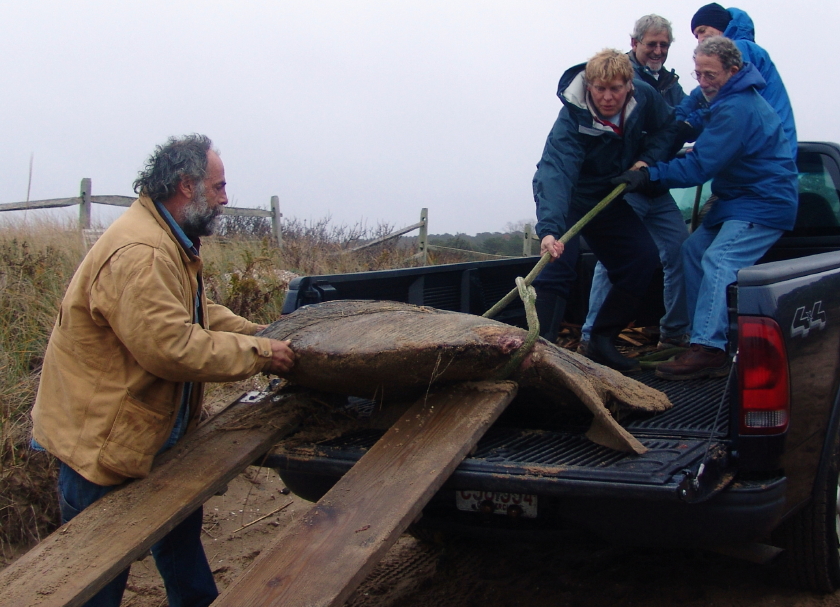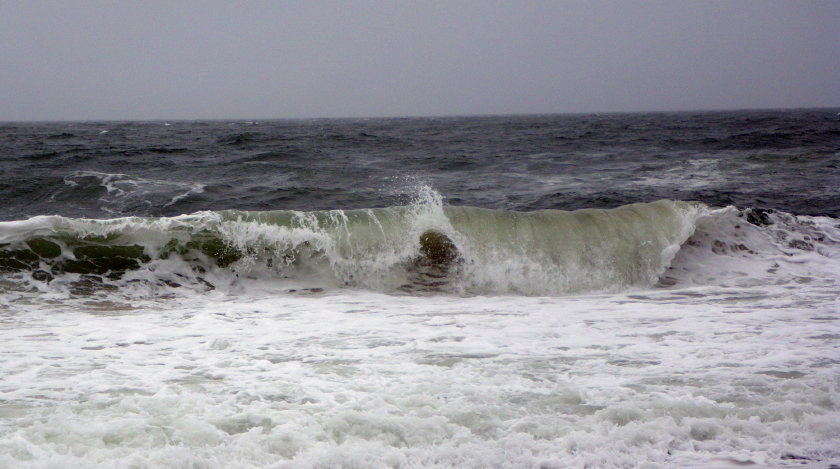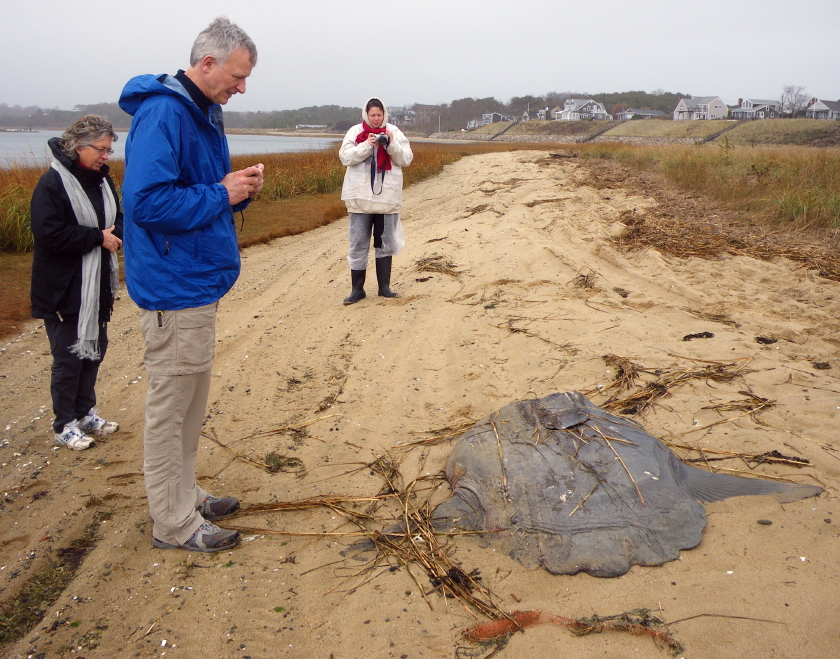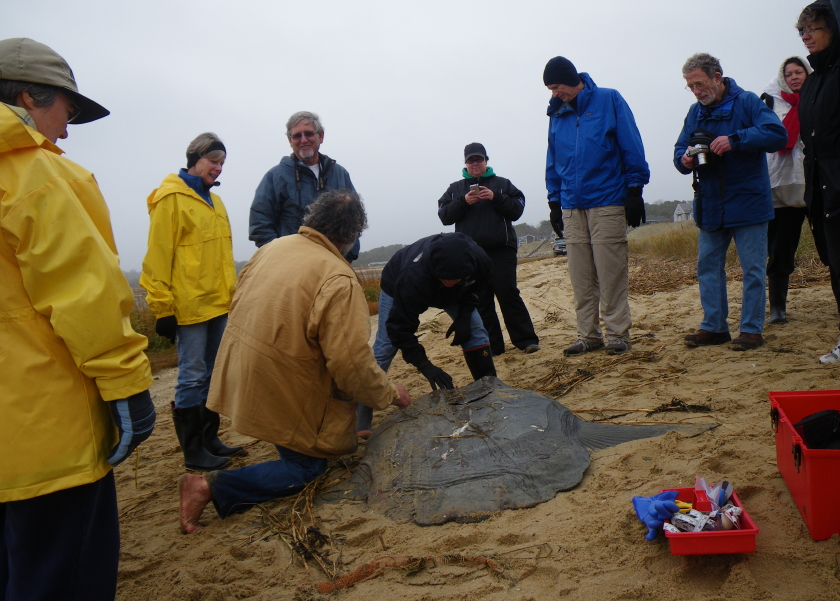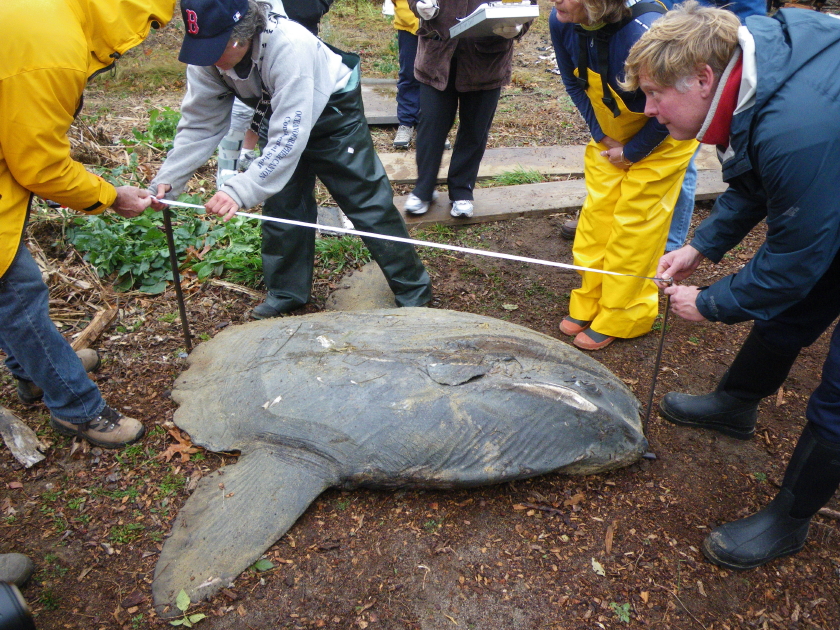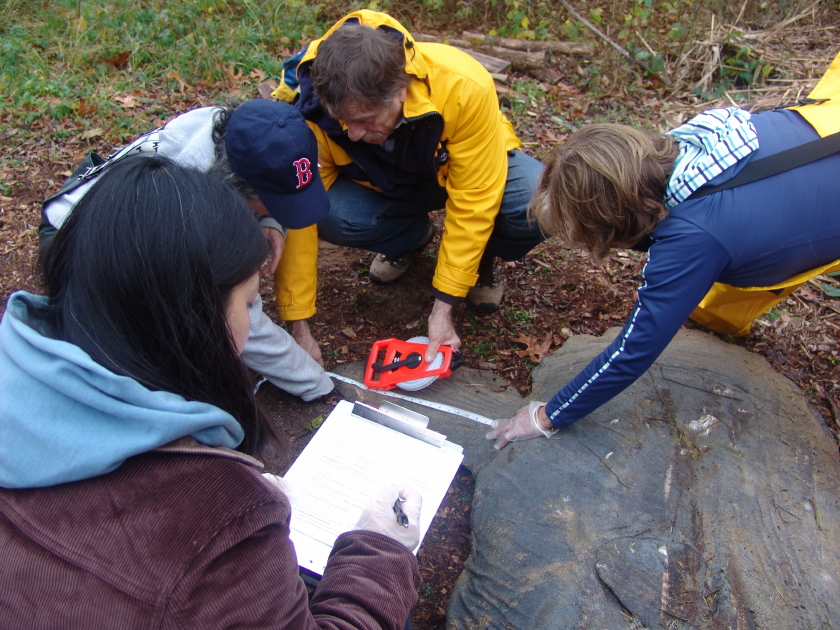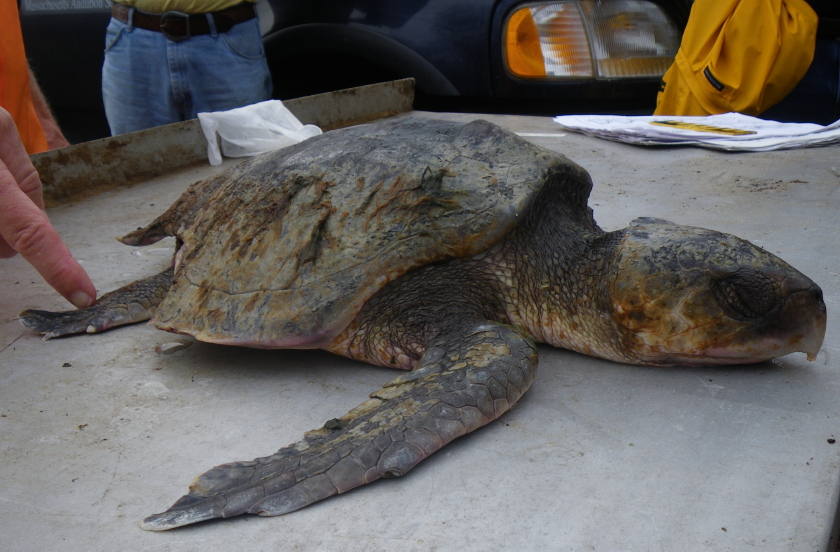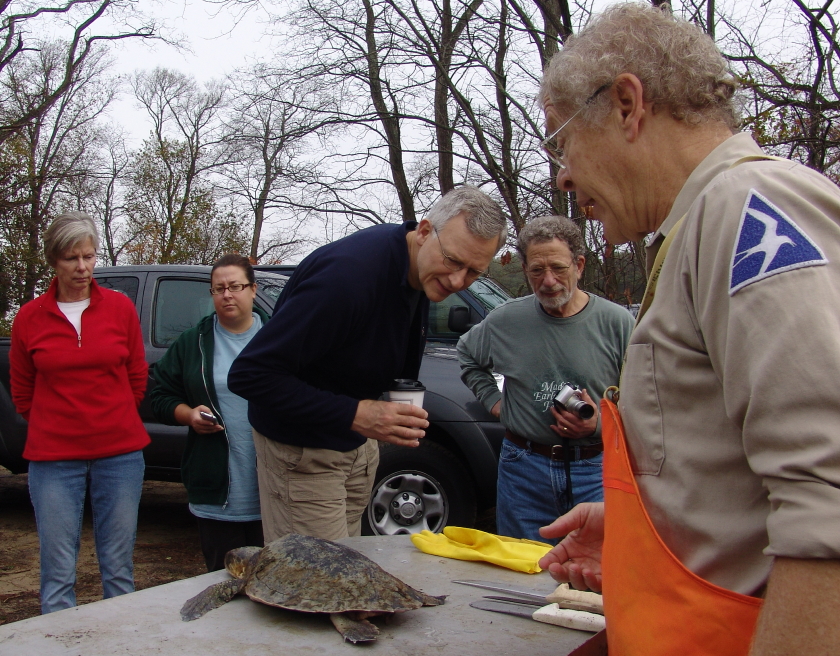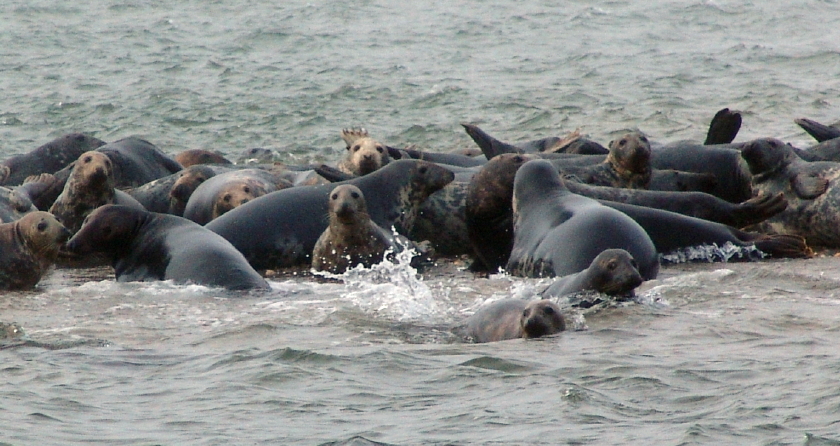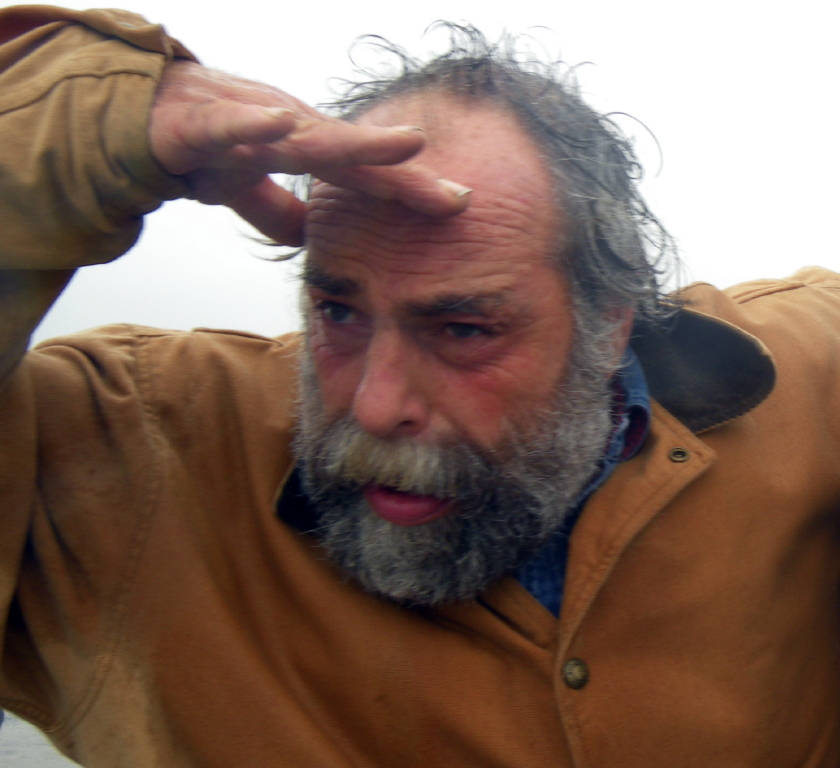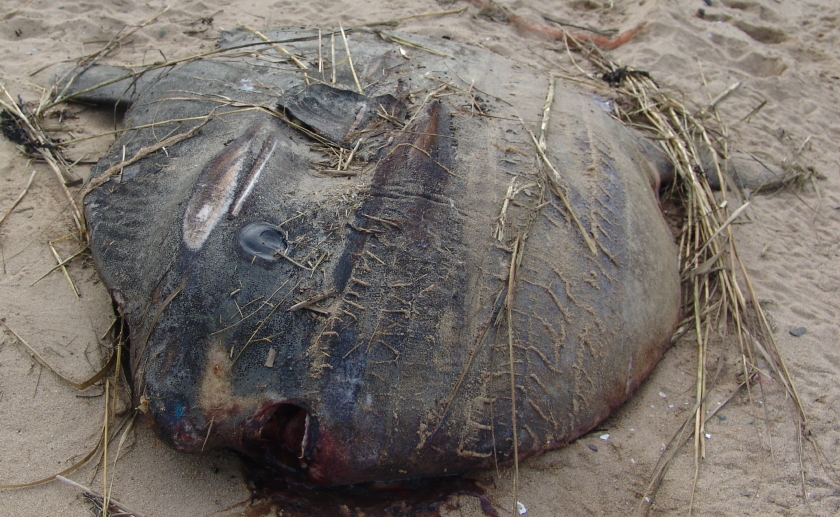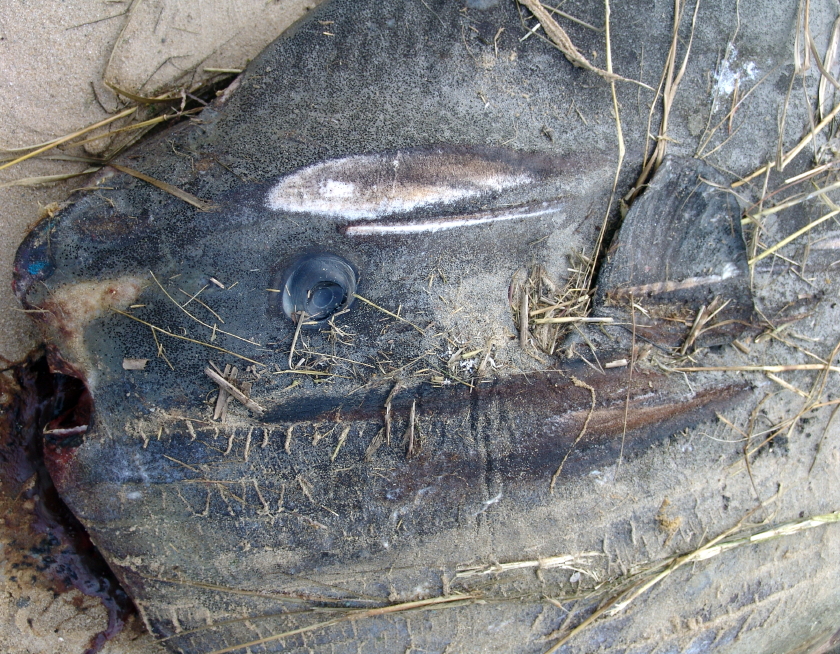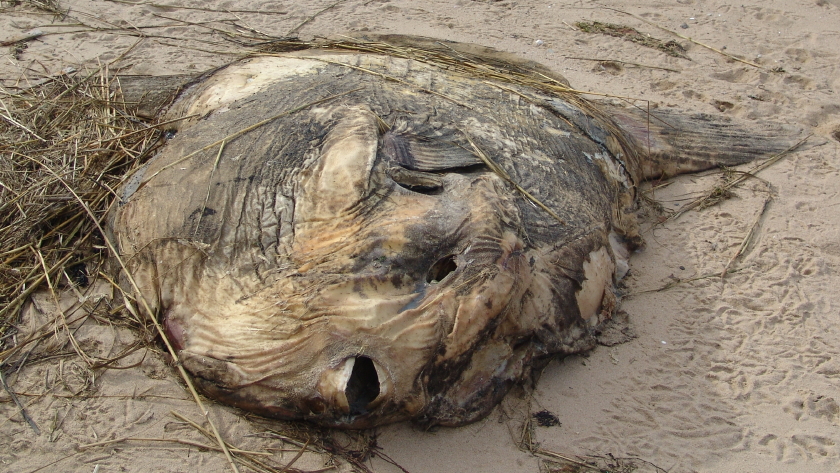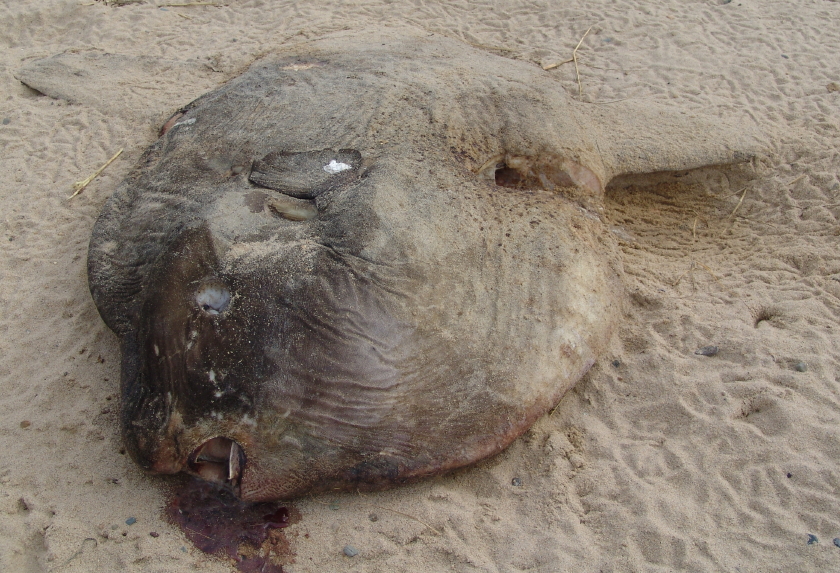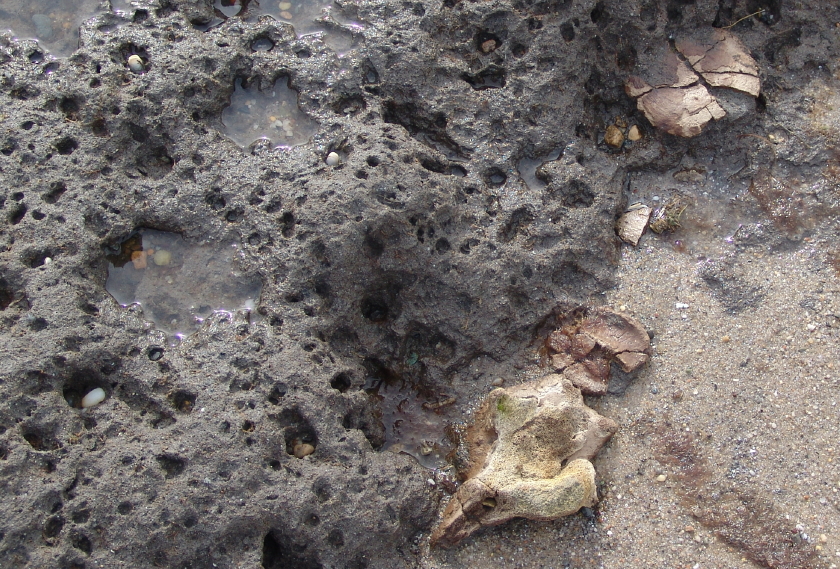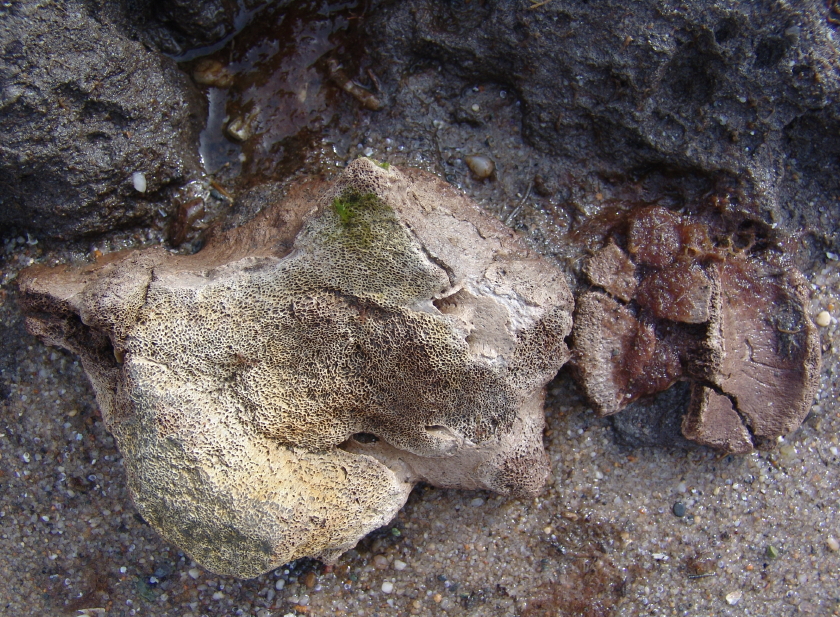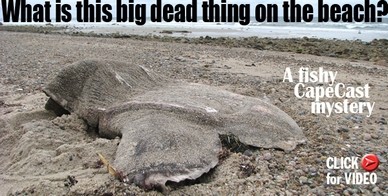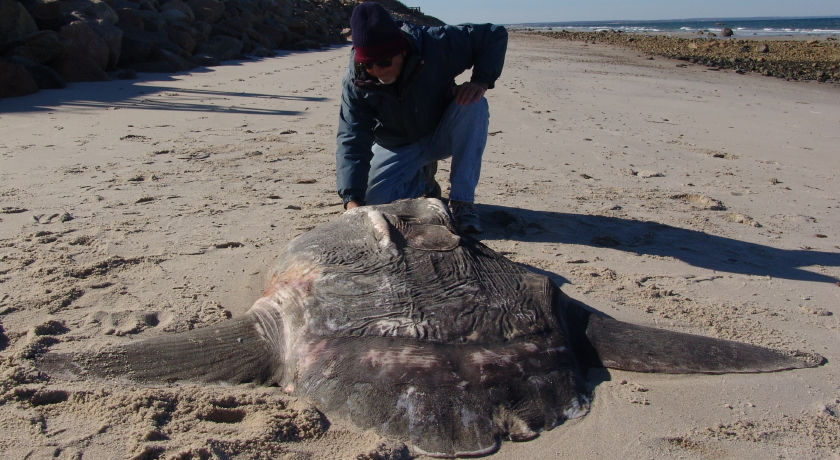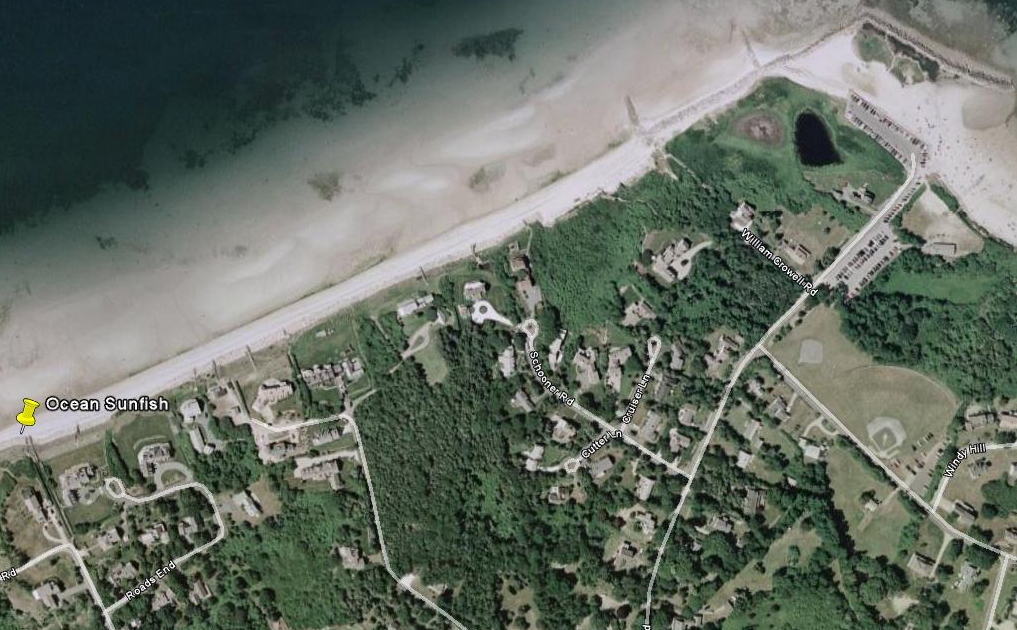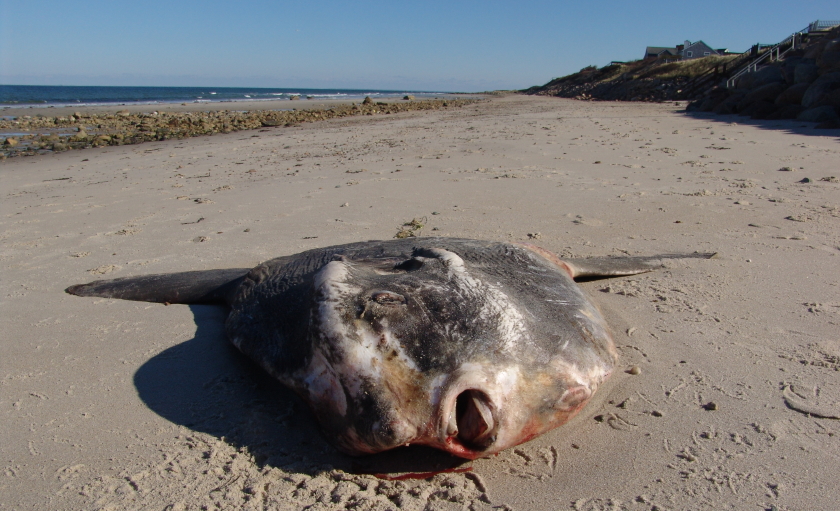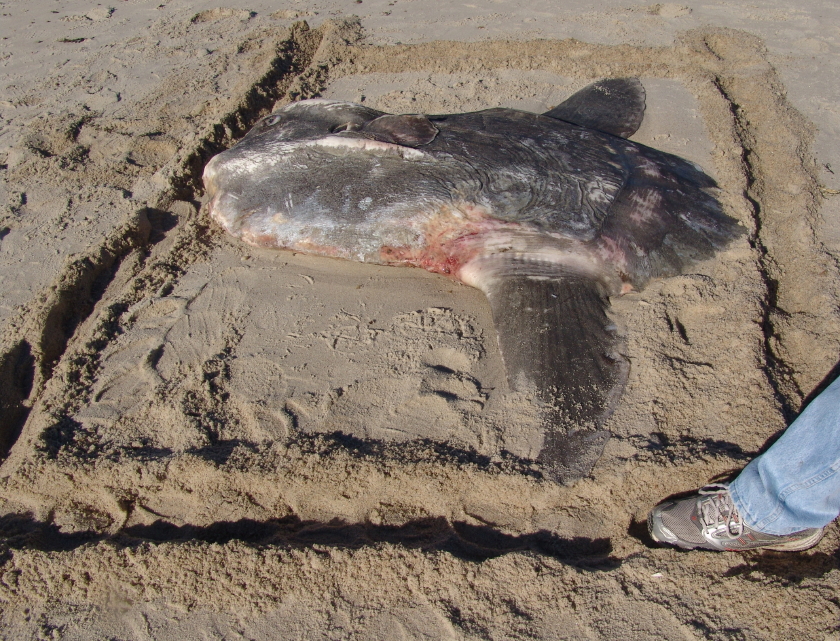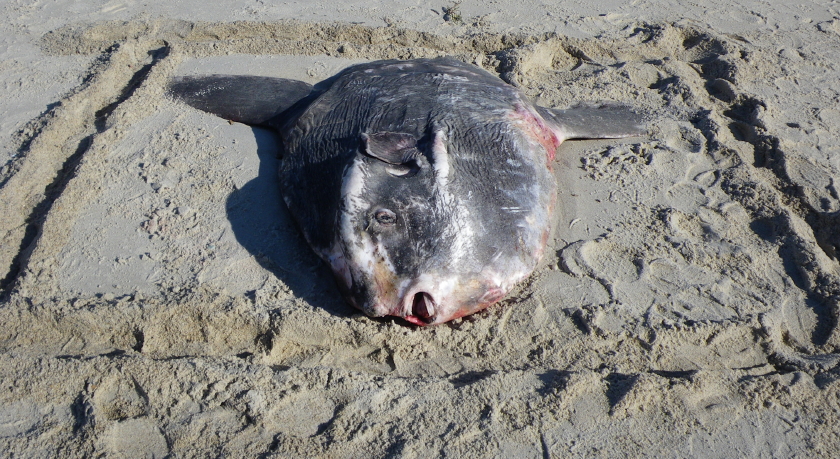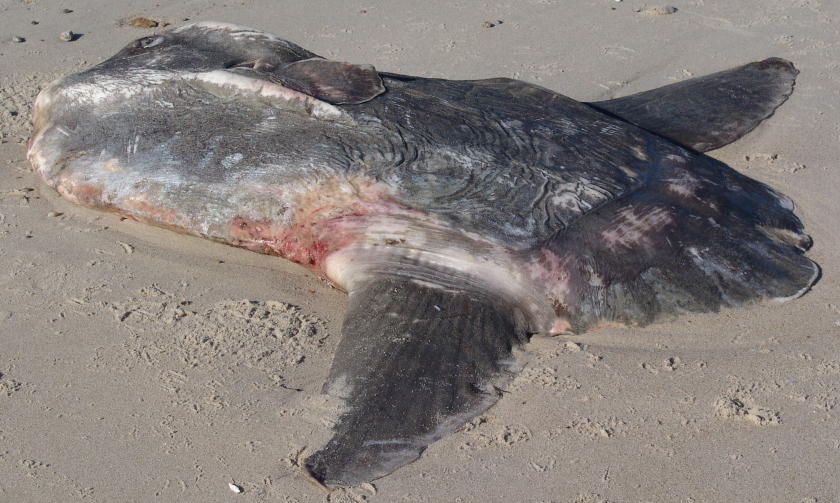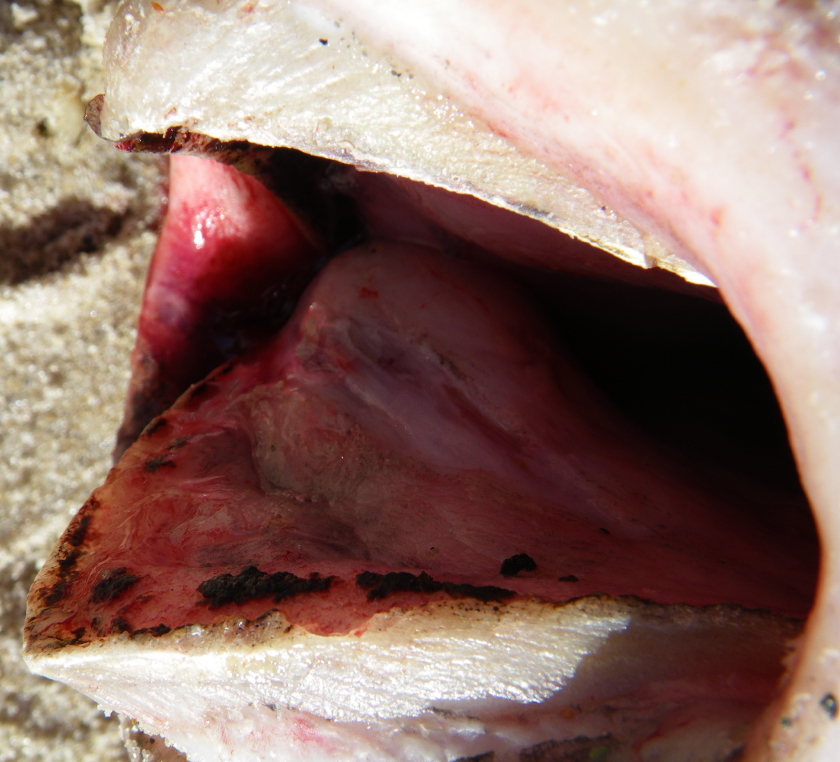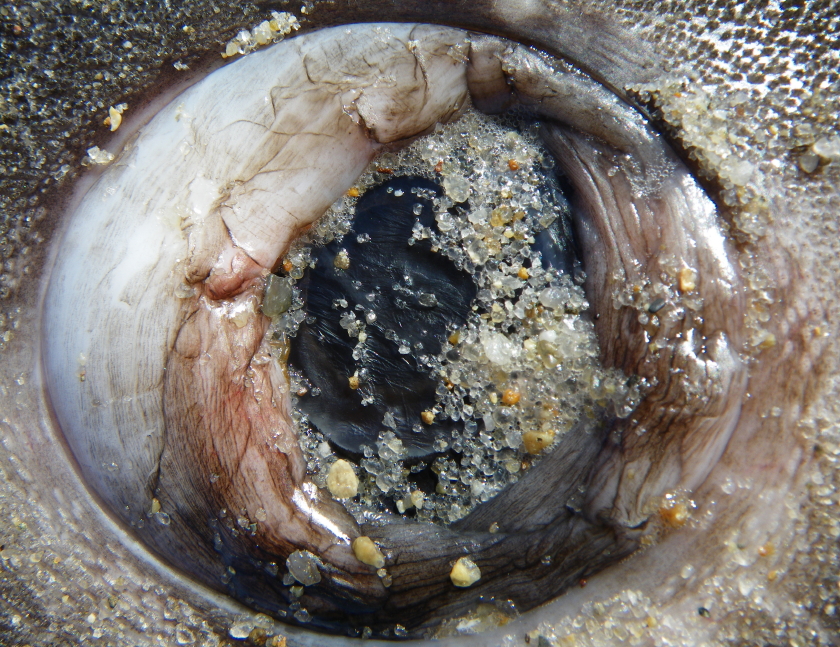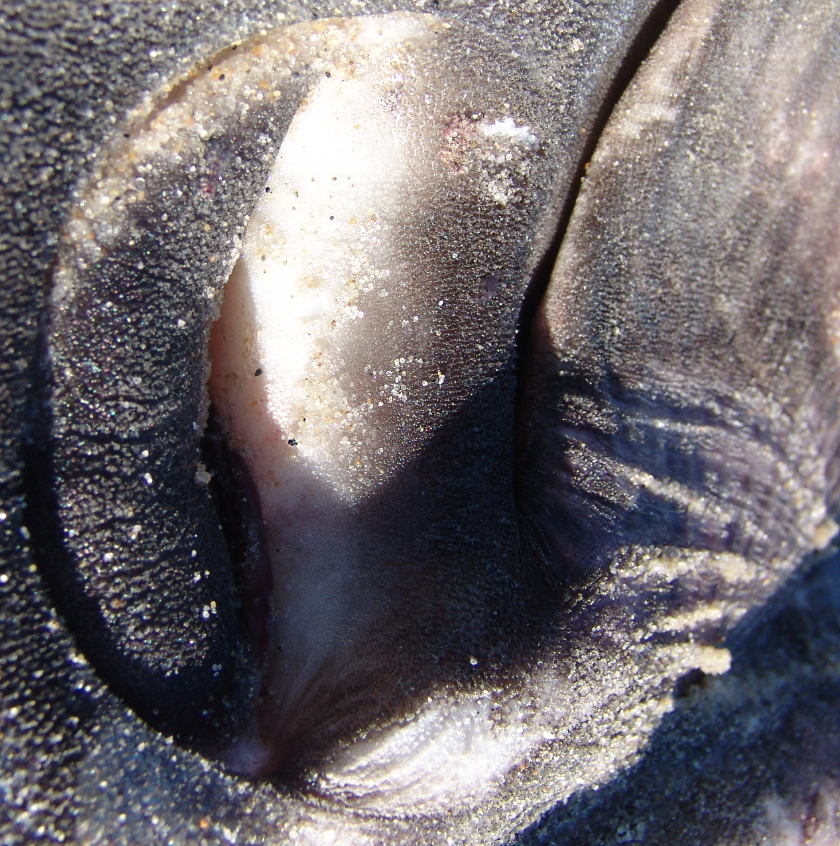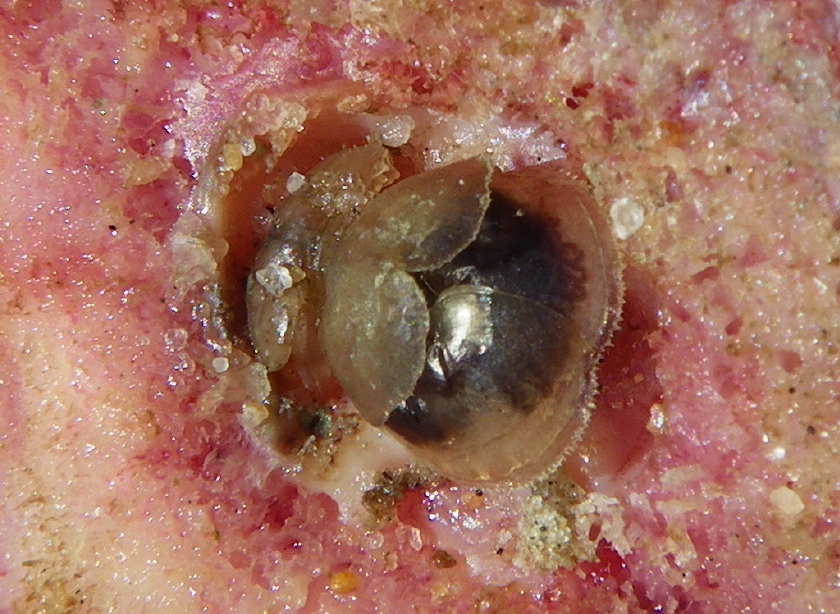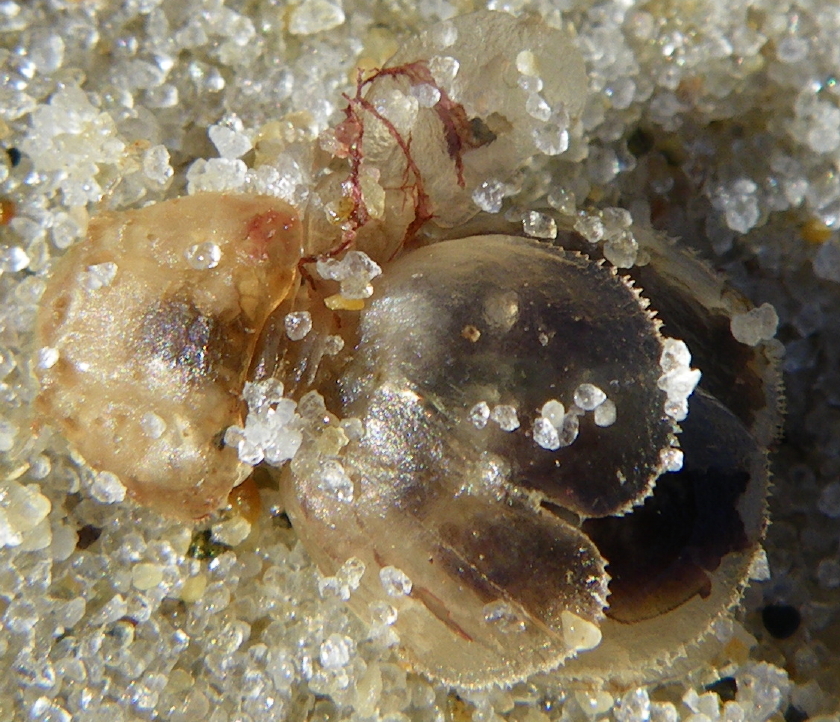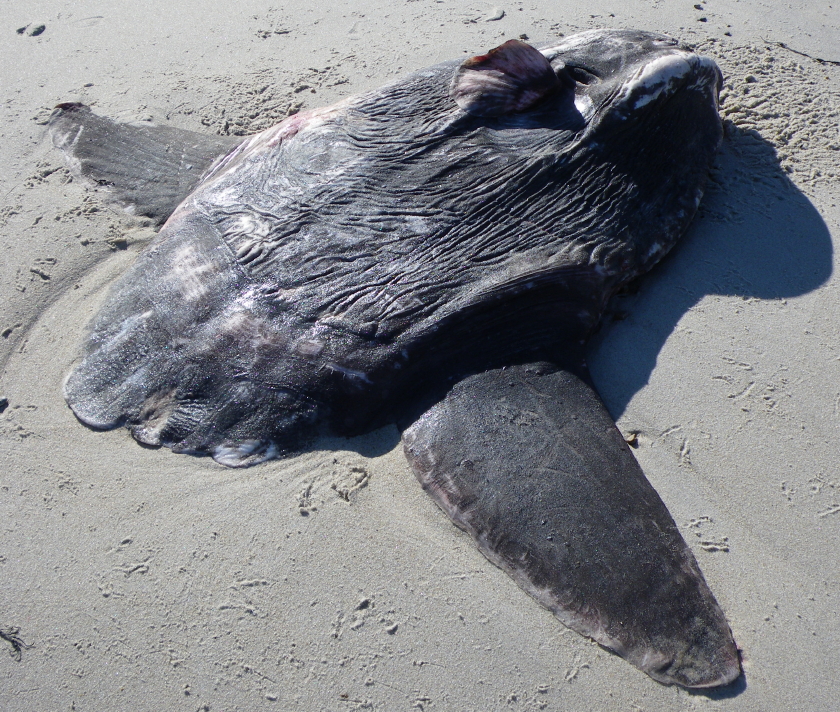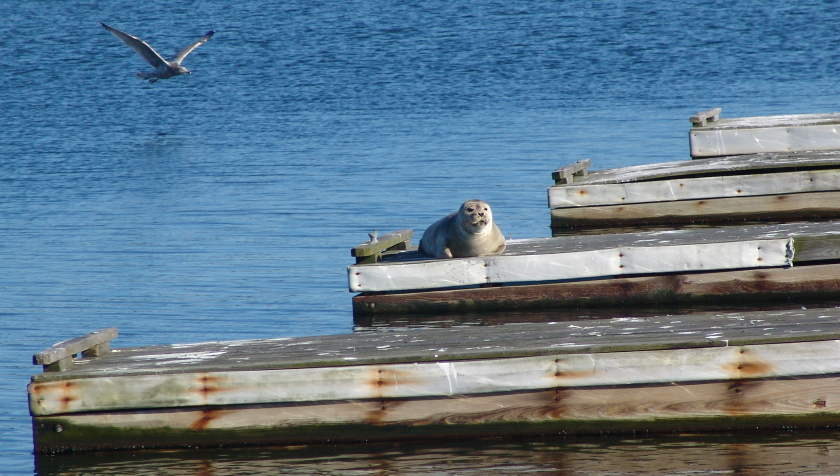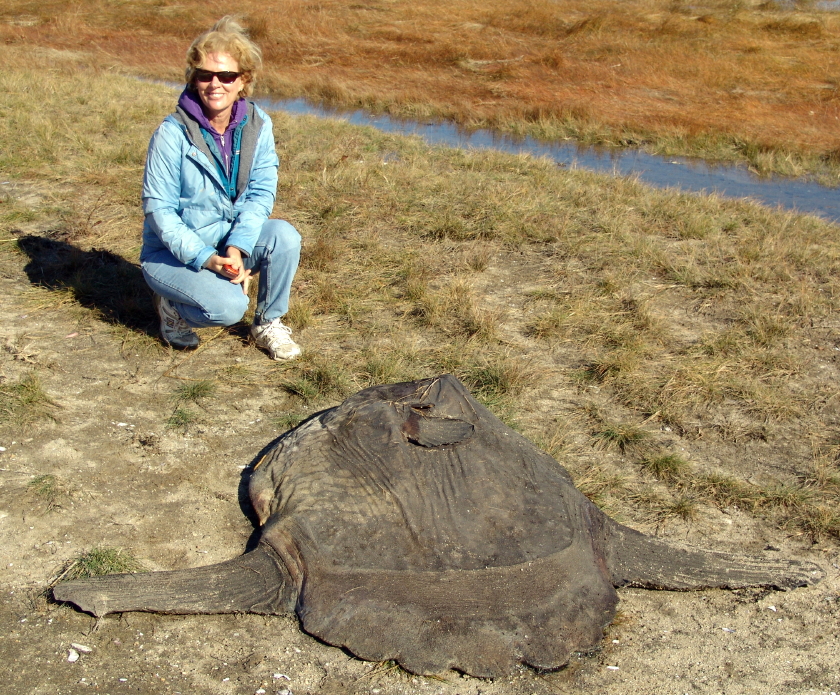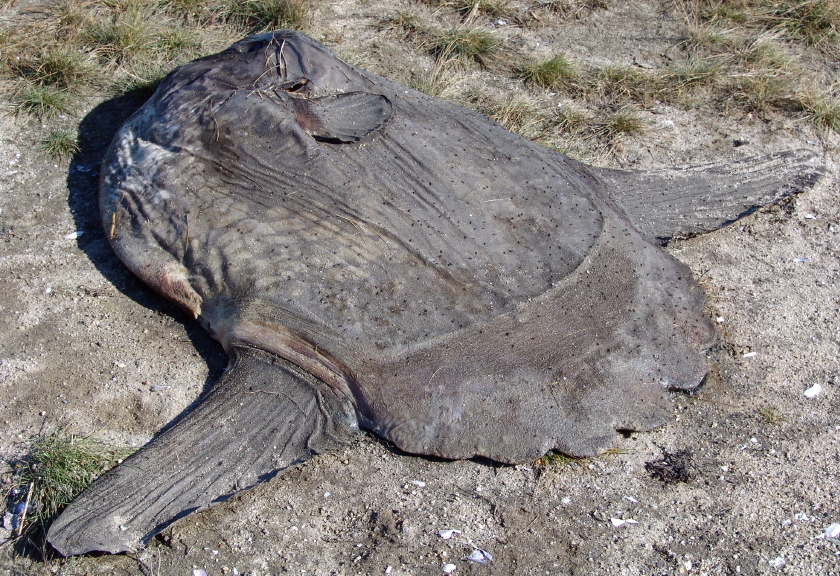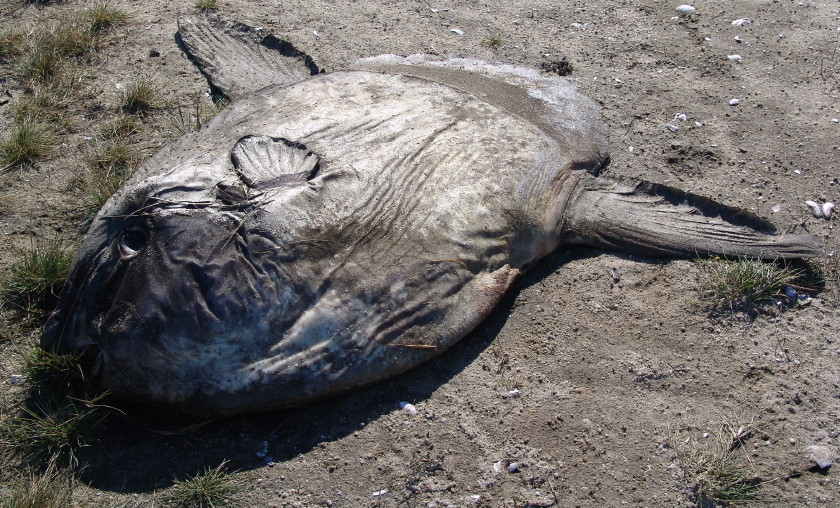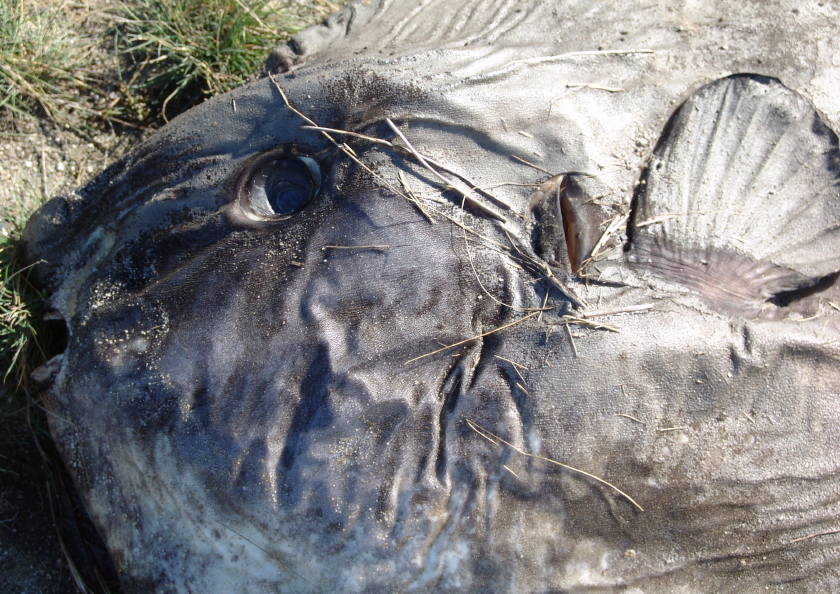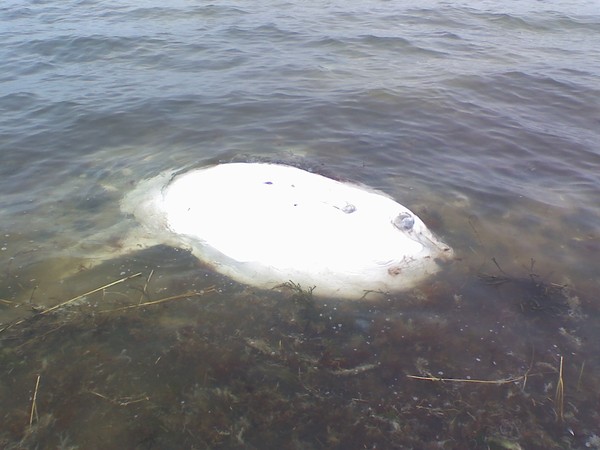Quarter Ton Ocean Sunfish Moved to Sanctuary
The Stranding Weekend field adventure offered by Mass Audubon’s Wellfleet Bay Wildlife Sanctuary in mid November is clearly a hands-on, participatory event. As a gentle fall lingered into the Ides of November, there were concerns that the pre-planned Stranding Weekend would prove nothing more than “a walk on the beach.”
Breakers Roll into Scusset Beach in Bourne
Thanks to Mother Nature, Hurricane Ida, then tropical storm and finally powerful nor’easter pounded Cape Cod with driving rain and gale force winds blowing directly from the North Atlantic. While water and air temperatures remained a tad too high to induce cold-stunned sea turtle strandings, the Cape presented a variety of marine species to observe, especially during and immediately after a nor’easter.
Â
Click Here to View Video in High Quality
Night Sea Turtle Patrol in Teeth of Nor’easter
After a wonderful candlelight dinner in the Wellfleet Bay Nature Center Friday evening, participants endured a brief stranding introduction by weekend leaders, Bob Prescott (sanctuary director), Dennis Murley (senior naturalist), Sue Wieber Nourse (marine scientist and master educator) and Don Lewis (Turtle Guy). Everyone bundled into layers upon layers of hopefully waterproof clothing, adjusted headlamps and flashlights, loaded into the Mass Audubon van and the Turtle Journal Element and headed to Chapin Beach in Dennis in search for stranded creatures at the nighttime high tide.
Sandy Neck Teams
Led by Dennis Murley (center) & Sue Wieber Nourse (right)
Bright and early Saturday morning, participants geared up again. Two teams led by Dennis Murley and Sue Wieber Nourse climbed in the van to head to the Sandy Neck barrier beach in West Barnstable. With winds blowing from the east northeast, stranded animals were more likely to be found on beaches at the west end of Cape Cod.
Chipman’s Cove Team Discovers Quarter Ton Ocean Sunfish
Another team under Don Lewis patrolled Scusset Beach on the other side of Cape Cod Canal in Bourne, then hit Campground Beach in Eastham to confirm the stranding of a juvenile torpedo ray and finally visited Chipman’s Cove in Wellfleet to document a freshly stranded male ocean sunfish.
Examination of Male Ocean Sunfish at Chipman’s Cove
After teams reassembled at the Sanctuary for a great lunch, it was time to saddle up and put our backs into the enormous channel of moving the quarter ton, male ocean sunfish from the beach at Chipman’s Cove to the Wellfleet Bay Wildlife Sanctuary for a scientific necropsy. You may recall that the scientific name for ocean sunfish (Mola mola) is derived from the Latin word for millstone. Perhaps that gives you some idea of the challenge ahead.
Click Here to View Video in High Quality
Moving Quarter Ton Ocean Sunfish to Necropsy
Nothing creates comraderie more solidly than a backbreaking team build … and moving a quarter ton deadweight more than qualifies as a backbreaking exercise.  You sign up for hands-on experience; you get hands-on experience!Â
Measuring Length of Male Ocean Sunfish
Back at the sanctuary with the Mola mola intact, participants began the process of taking detailed measurements. Krill Carson of NEBShark joined the leadership team on Saturday for a scientific necropsy of the ocean sunfish.
Measuring Dorsal Fin of Male Ocean Sunfish
Once external measurements were completed, a detailed necropsy commenced to scientifically document the anatomy of the Mola mola species and to collect certain tissue samples for further analysis. During the autopsy, we determined that this animal was a male.
Juvenile Female Kemp’s Ridley Sea Turtle
The next morning began with a necropsy of a juvenile Kemp’s ridley sea turtle that had stranded on Sandy Neck beach the previous weekend.Â
Bob Prescott Prepares Necropsy of Female Kemp’s RidleyÂ
Despite a large, well-healed probable shark bite in its lower right quadrant, this specimen was assessed to have been in rather healthy condition prior to getting trapped and cold-stunned in Cape Cod Bay. Based on the autopsy, the gender of this animal was determined to have been female.
Click Here to View Video in High Quality
Fog Enshrouded Cruise of Wellfleet Bay
Necropsy completed, participants headed to the Town Pier to board the Naviator for a two hour cruise of Wellfleet Bay. The destination would be Jeremy Point and Billingsgate Shoals at the southern end of the Great Island peninsula. The calm after the storm (Hurrican Ida) brought a thick fog that lay like a comforting blanket over the seascape. Shorebirds, driven by gale winds to seek shelter in Wellfleet Bay, filled the harbor. About a half mile west of Indian Neck, we encountered a bull pilot whale … a rare sighting from the Naviator. Mass pilot whale stranding have occurred with such frequency in Wellfleet that one of its principal estuaries is named Blackfish Creek after the species.
Curious Gray and Harbor Seals Lounge on Sandbar
On a sandbar off Jeremy Point, we ran into a large gathering of gray and harbor seals, many of whom were as curious about us as we were about them.
Dennis Murley Looks Forward
To Next Year’s Stranding Weekend
